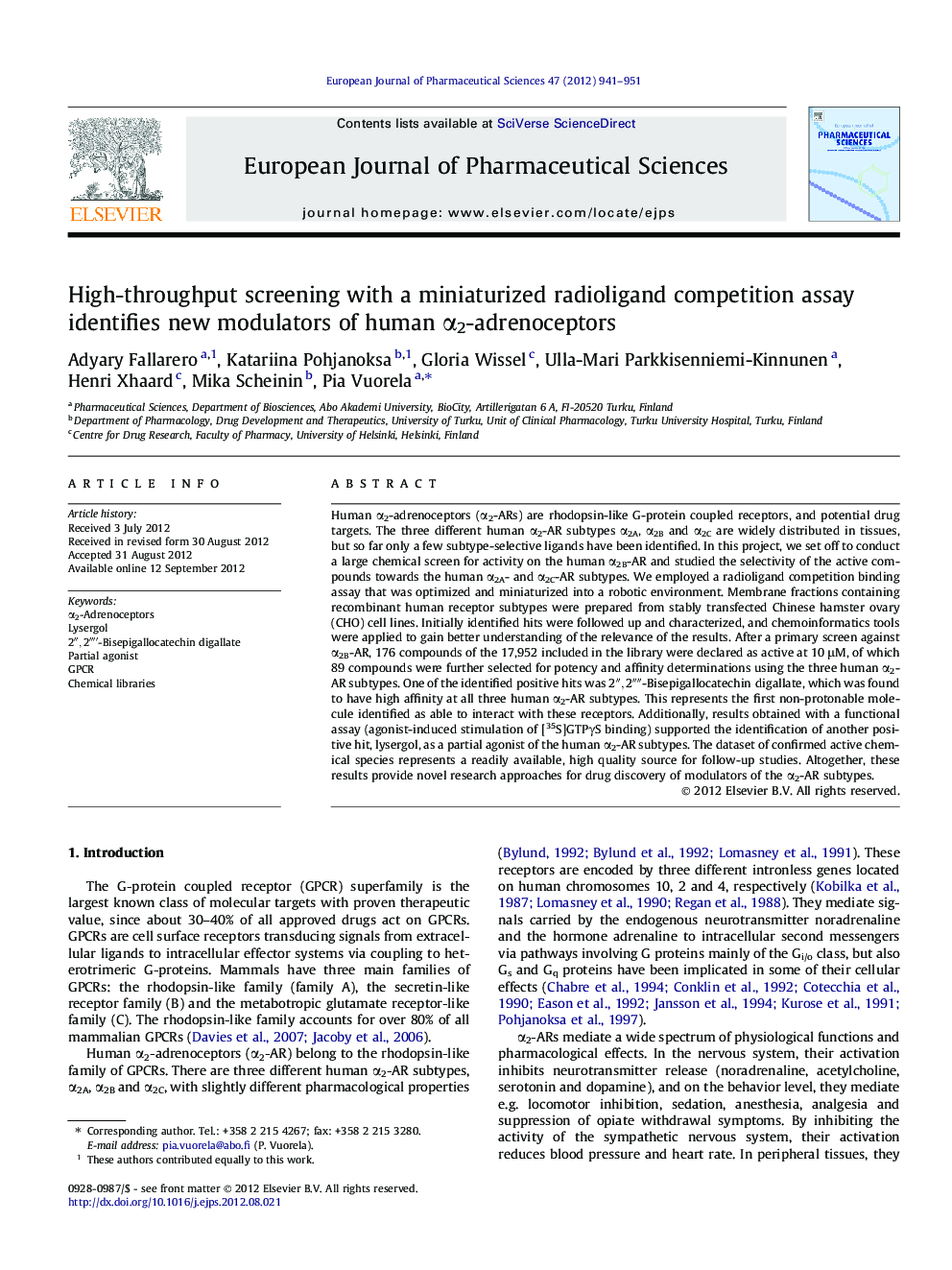| Article ID | Journal | Published Year | Pages | File Type |
|---|---|---|---|---|
| 2480805 | European Journal of Pharmaceutical Sciences | 2012 | 11 Pages |
Human α2-adrenoceptors (α2-ARs) are rhodopsin-like G-protein coupled receptors, and potential drug targets. The three different human α2-AR subtypes α2A, α2B and α2C are widely distributed in tissues, but so far only a few subtype-selective ligands have been identified. In this project, we set off to conduct a large chemical screen for activity on the human α2B-AR and studied the selectivity of the active compounds towards the human α2A- and α2C-AR subtypes. We employed a radioligand competition binding assay that was optimized and miniaturized into a robotic environment. Membrane fractions containing recombinant human receptor subtypes were prepared from stably transfected Chinese hamster ovary (CHO) cell lines. Initially identified hits were followed up and characterized, and chemoinformatics tools were applied to gain better understanding of the relevance of the results. After a primary screen against α2B-AR, 176 compounds of the 17,952 included in the library were declared as active at 10 μM, of which 89 compounds were further selected for potency and affinity determinations using the three human α2-AR subtypes. One of the identified positive hits was 2″,2‴′-Bisepigallocatechin digallate2″,2‴′-Bisepigallocatechin digallate, which was found to have high affinity at all three human α2-AR subtypes. This represents the first non-protonable molecule identified as able to interact with these receptors. Additionally, results obtained with a functional assay (agonist-induced stimulation of [35S]GTPγS binding) supported the identification of another positive hit, lysergol, as a partial agonist of the human α2-AR subtypes. The dataset of confirmed active chemical species represents a readily available, high quality source for follow-up studies. Altogether, these results provide novel research approaches for drug discovery of modulators of the α2-AR subtypes.
Graphical abstractFigure optionsDownload full-size imageDownload high-quality image (86 K)Download as PowerPoint slide
